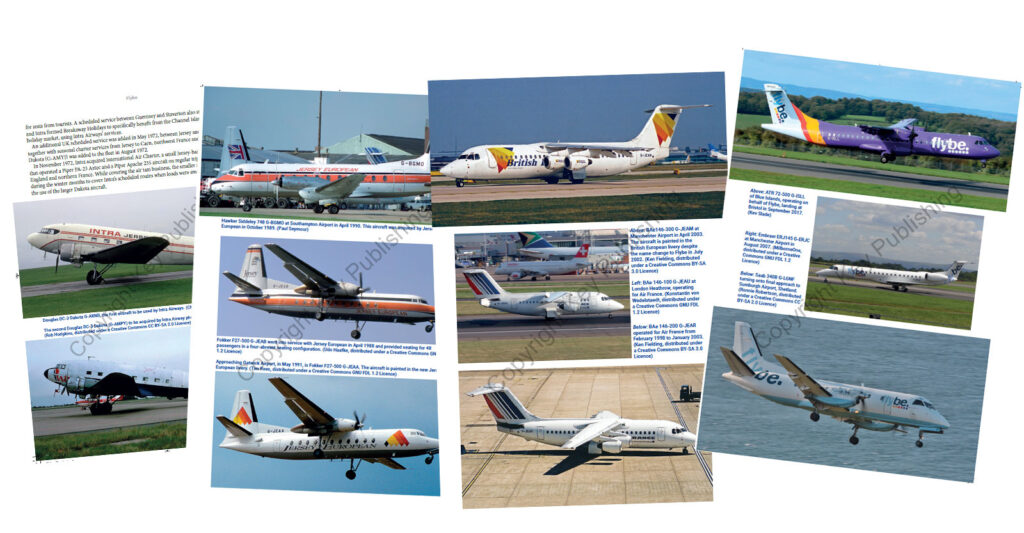Flybe was sadly one of the more recent casualties of the difficult airline business… in fact, it has succumbed to financial pressures not once, but twice, in recent years!
The airline was once Europe’s largest regional carrier, with bases in the United Kingdom and a network stretching across the country and into neighbouring European cities too.
Following years of financial struggles and difficulties resulting from being stretched thin across a widespread network, a failed attempt to merge into Virgin Atlantic-backed Connect Airways failed and Flybe went bankrupt on 5 March 2020.
At the time it went into administration, Flybe had 65 aircraft in its fleet: 54 Dash 8-Q400s, nine Embraer E175s and two Embraer E195s.
Then in 2021 work began on resurrecting Flybe using its Air Operator’s Certificate, which came with some very valuable slots at London Heathrow airport. Eventually the airline, known unofficially as Flybe 2.0, got flying again in April 2022 from a base at Birmingham, and utilising the Heathrow slots on flights to Aberdeen and Edinburgh. Again, the airline used the Dash 8-Q400 in a new livery, and also announced a Belfast City base.
Sadly, the carrier was not able to survive the high costs and difficulties surrounding the acquisition of aircraft. It once again entered administration in January 2023.
The Lineage of Flybe

Photo (c) Rob Hodgkins
You may be thinking Flybe is a relatively new airline, but in fact it can trace its lineage back to 1969. According to Nigel Richardson in his new book, Flybe, the very beginnings of what became Flybe started when Intra Airways was formed at Jersey. It flew Douglas DC-3s, and later BN-2 Islanders and Vickers Viscounts on intra-island routes, and services to the mainland United Kingdom.
Intra Airways was sold to the Express Air Freight Group, which had been operating a regional freight airline since 1971, in January 1979. The result was a new airline known as Jersey European Airways.
Jersey European became a common sight across the United Kingdom flying regional services, particularly to the islands of Jersey and Guernsey. Their fleet comprised most of the regional turboprops of the day, including the Viscount, Short 330 and 360, Embraer EMB-110 Banderiante, Hawker Siddeley HS.748 and Fokker F-27.
In the 1990s Jersey European added British Aerospace BAe 146 jet aircraft, added more European services, and began code-sharing with Air France.
To better reflect its wider reach beyond the Channel Islands, the airline changed its name to British European in May 2000, retaining the same basic livery. By now the fleet also included DHC-8 Dash 8s and Canadair CRJ200s.
Low-Cost Switch


A decision was made in the early 2000s to switch British European to operating more of a low-cost model, whilst still focusing on business routes. The airline was rebranded as Flybe (from Fly British European), and began painting its aircraft in a new colour scheme.
Whilst the Air France partnership continued for a while, Flybe began changing its fleet to comprise only the BAe 146, Dash 8 Q400, and newly ordered Embraer E-Jets. The CRJs and older Dash 8s would soon go.
Boeing 737-300s were briefly flown on leisure services, and in 2007 Flybe purchased BA Connect from British Airways, which introduced Embraer 145s to the fleet and many new routes to the network.
Later tie-ins with Loganair, Brussels Airlines, Eastern Airways and Finnair all saw Flybe’s fleet change, and occasionally the colours of other carriers worn.
At the time of its initial demise in 2020, Flybe’s fleet comprised 54 DHC-8 Q400s and 9 Embraer 175s.
Flybe Book

The full, fascinating story of this airline from its earliest days (and through its predecessors), right through to the startup of Flybe 2.0, is told in Nigel Richardson’s new book, Flybe, published by Key Publishing.
The book has around 140 colour photographs covering this entire history, showing the many different aircraft types flown and lots of the special liveries and airline partnerships over the years.
It also includes a fleet list of every aircraft flown across all of the constituent airlines, from Intra Airways and Express Air Freight, through Jersey European, and to Flybe 2.0.
I t’s a really interesting read, and hopefully you’ll know the quality of Nigel’s writing and research from the articles he’s published on AirportSpotting.
t’s a really interesting read, and hopefully you’ll know the quality of Nigel’s writing and research from the articles he’s published on AirportSpotting.
You can buy Flybe buy Nigel Richarson at this link, and from all good aviation bookshops.





